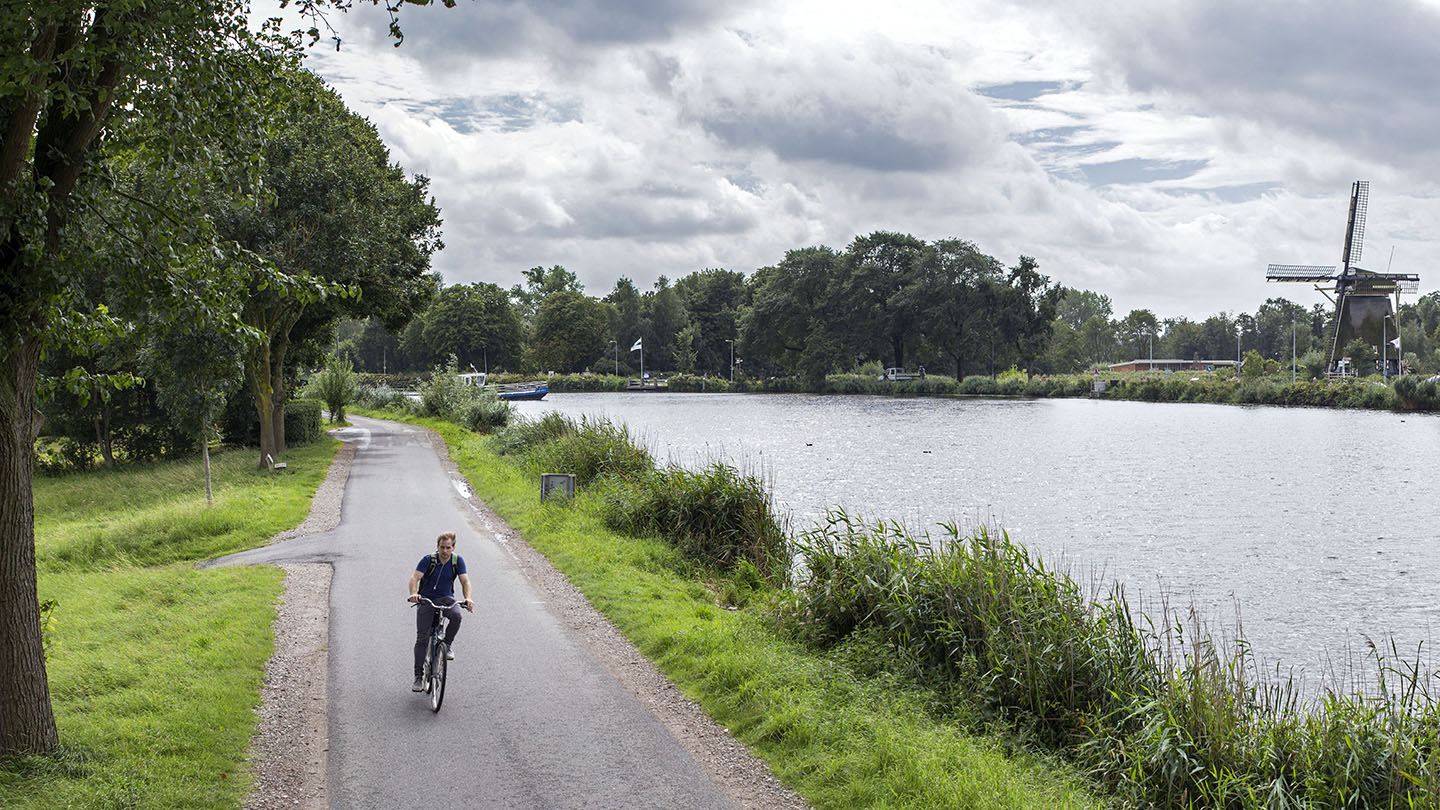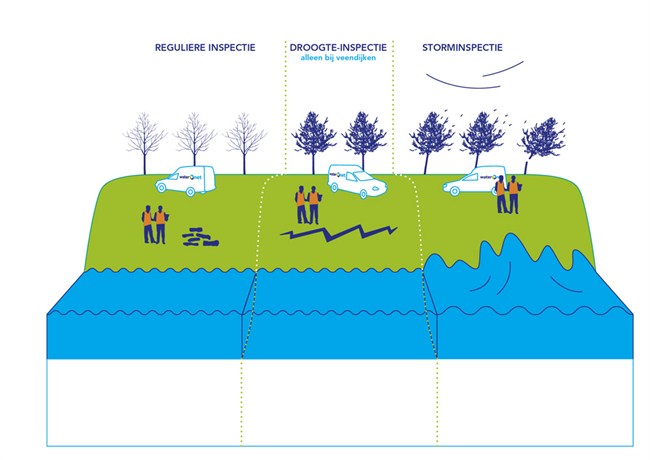Dykes
Waternet thoroughly checks the dykes every 12 years. We check whether they still meet the safety requirements of the province. Furthermore, our experts on dykes do the rounds of the dykes every year, to see whether any dykes are damaged. If necessary, we will do extra inspections. Do these show that we need to take action? Then we will improve the dyke.

We maintain the dykes for the Regional Public Water Authority Amstel, Gooi en Vecht. The water authority is responsible for protecting you against flooding.
The water authority protects you against water(U verlaat deze site)
The total length of dykes in the province is more than 1000 kilometres. These dykes do not always meet the safety requirements of the province. This may be caused by:
- a rise in the sea level (increasing the pressure of the groundwater)
- dropping land levels
- dykes drying out
- rats digging tunnels
We want to strengthen a dyke before it becomes too weak. That is why we inspect the dykes.
When do we inspect the dykes?

Regular inspection, inspection of the level of dryness of the soil, only needed for peat dykes, storm inspection.
Every year
We perform the annual inspection in November and December. Then we take a look at all of the dykes.
Every 12 years
Every 12 year we thoroughly check the dykes. We measure and drill land and check whether the dyke is still strong enough.
In the event of stormy weather
If the meteorological institute KNMI issues a storm warning, Waternet inspects the dykes that will be most affected by the storm. The direction of the wind determines which dykes need to be inspected.
If it has not rained for an extended period of time
If it has not rained for an extended period of time, we must check the peat dykes more thoroughly. In 2003, a peat dyke broke at Wilnis. This incident made clear that extended periods of drought can make peat dykes weaker. A dry spell will make the peat dry out and therefore the dyke will become lighter. The pressure of the water can cause the dyke to shift.
After the breach in the dyke at Wilnis, we have strengthened the dykes which were susceptible to drought. We covered them with a layer of clay. Sometimes, we also add a berm as extra protection.
If someone reports a problem
Did someone report damage to a dyke? Then we will focus on the reported problem or requested information when checking the dyke.
The investigation
During our investigation of a dyke we follow various steps:
- We measure the height and the width of the dyke.
- We check the condition of the soil.
- We check the ground water level. We use drilling equipment and small caterpillar track vehicles. We also use measuring equipment.
- We drill and measure large pieces of property.
When we need to investigate a dyke, we notify the residents and companies of the property we need to access. This is done via letters and advertisements.
After the investigation
The Regional Public Water Authority Amstel, Gooi en Vecht sends the result of the dyke investigation to the province. If the investigation shows that the dyke is not strong enough, we will improve the dyke. First of all, we contact the residents and businesses which are located along the dyke.
Improvement of the dyke
If we need to improve the dyke, we organise kitchen table discussions with the residents and businesses which are located along the dyke. We involve the residents in the planning process. When working on a project, we always try to keep disruption to the surrounding area to a minimum.